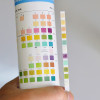
 IJCP Editorial Team
IJCP Editorial Team
Procedural Pain Response to Various Heel Prick Devices in Neonates
The heel
prick is a frequently performed, painful procedure in neonates, and various
devices are available for this purpose. Evaluating and comparing the procedural
pain responses triggered by these devices is necessary.
The aim of
a recent study was to evaluate and compare the neonatal pain responses
associated with three different heel prick devices; vis, automatic
lancet, manual lancet, and a 26-gauge hypodermic needle.
In this
parallel-group three-arm randomized controlled trial, clinically stable
neonates with a gestational age greater than 28 weeks and a birth weight
exceeding 800 g, undergoing heel prick for random blood sugar estimation, were
included.
Here, the
neonates (n=180) were randomly assigned to three groups – automatic lancet (n=59),
manual lancet (n=59), or needle (n=62), between 2021-2022. The primary outcome
measured was the premature infant pain profile-revised (PIPP-R) score.
Secondary outcomes included post-intervention cerebral regional oxygen
saturation (CrSO2), changes in CrSO2 (ΔCrSO2), time for CrSO2 normalization
using near-infrared spectroscopy, duration of audible cry, and the number of
squeezes and pricks required. The analysis was conducted on an
intention-to-treat basis.
The
results revealed that the median (IQR) PIPP-R scores were similar in the
automatic lancet [6 (4, 7.5)], manual lancet [5.5 (3.5, 8)], and needle [6
(3-9.6)] groups, with no statistically significant difference. There were no
significant differences in post-intervention CrSO2, ΔCrSO2, and the number of
pricks among the groups. However, the time needed for CrSO2 normalization and
the number of squeezes were significantly higher with the needle.
All three devices produced comparable pain responses during heel prick procedures in neonates. However, the needle required a higher number of squeezes. Further studies are necessary to compare heel prick devices with long-term neurological follow-up.
Source: Devi R, Priyadarshi M, Singh P, Chaurasia S, Basu S. Indian Pediatrics. 2023 Nov;60(11):893-8.

IJCP Editorial Team
Comprising seasoned professionals and experts from the medical field, the IJCP editorial team is dedicated to delivering timely and accurate content and thriving to provide attention-grabbing information for the readers. What sets them apart are their diverse expertise, spanning academia, research, and clinical practice, and their dedication to upholding the highest standards of quality and integrity. With a wealth of experience and a commitment to excellence, the IJCP editorial team strives to provide valuable perspectives, the latest trends, and in-depth analyses across various medical domains, all in a way that keeps you interested and engaged.












Please login to comment on this article